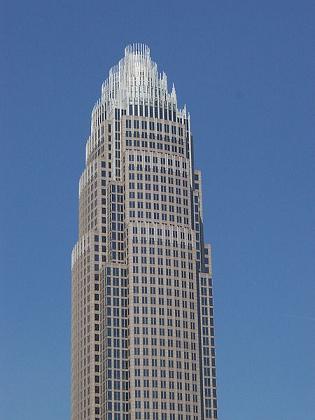
Matthew Leitch, educator, consultant, researcher
Real Economics and sustainability
Psychology and science generally
OTHER MATERIALWorking In Uncertainty
Innovation at the Bank of America

Go into a branch of a bank on your local highstreet today and you will find the usual array of cash machines, paying in machines, an internet kiosk or two, desks in cubicles for sit-down meetings with customers, someone to greet you near the door, someone to help you with the machines - all the usual stuff.
But of course this is all new stuff. It wasn't that long ago that a typical bank branch consisted of a queueing area for customers and a working area for the bank staff, separated by a long desk with a glass screen and metal bars. If customers had been flesh eating zombies they wouldn't have been made less welcome.
That had to change, and banks have come a long way, including the Bank of America. Starting in 2000 the Bank of America began to operate a new approach to developing and testing innovations for its branches. Banks at that time were not renowned for innovation and the Bank of America was, understandably, concerned about innovations leading to banking errors.
Like so much in the corporate world their new process began with a spreadsheet. This one captured ideas for innovations.
The ideas then went through a filtering process (i.e. meetings, checklists, sometimes focus groups) to decide which would make it to the next stage – trialling.
Here's where it gets interesting. The trialling itself began with 'acting out' the new idea in their new prototype centre in Charlotte, North Carolina. For example, they might 'choreograph' and rehearse the conversation where a host (i.e. person who greets customers) hands off to specialists to provide a service (e.g. setting up a mortgage in a new, quicker way). The bank was particularly concerned about ideas that required skill by bank staff, such as helping customers use a new machine.
Once an idea had been polished in the prototype centre it was rolled out to one or more of the 25 innovation market branches (of three types) in Atlanta. These branches were fully functioning branches with real customers, but at any one time up to 15 experiments might be running in each branch.
After a 'washout' period of one or two weeks to reduce the effect of novelty, experiments lasted 90 days. There were some early stops when problems became clear quickly. More often, if customers liked an idea it might continue in their branch after the 90 day experiment, with national roll out to follow.
To get more reliable information each experiment was run in more than one branch, often with other branches acting as a control group. A lot of measurement was done, even including observation of customers in branches and questions put to customers in branches. The numbers before, during, and after experiments were compared too.
For example, customers waiting in a queue tended to overestimate the time they had been waiting if it was more than 2 minutes. This was found by observing and questioning customers in the innovation branches. However, if given a TV screen to watch (e.g. showing local and business news) they tended to be happier in queues. Were the screens worth it? The bank had done research that showed a statistical link between customer happiness and profits and used that to estimate the payback from buying screens for their branches.
By May 2002 over 200 ideas had been generated, 40 had proceeded to trialling with 36 actually trialled, 20 had been recommended for national roll out, and 4 had failed.
| Working In Uncertainty observations |
To some in the Bank of America it may have seemed that the new investment in innovation testing was a lot of effort and rigour, particularly as nothing like it had been done before in the bank. But, when you consider that it has thousands of branches in the USA alone, running some trials in just 25 of them, in just one state, is really a tiny investment. If the bank had just one branch in total it would still have been justified in running experiments in that branch in order to find out which ideas were improvements and which, in reality, were not. |
|---|
(Source of information: 'Experimentation matters' by Stefan H Thomke, published 2003 by Harvard Business School Publishing Corporation.)
Made in England